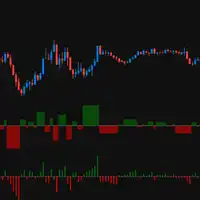
Identifying and Assessing Market Trends
Methods:
Use technical analysis tools such as trend lines, moving averages, and indicators like the Average Directional Index (ADX) or Moving Average Convergence Divergence (MACD) to identify market trends.
Conduct fundamental analysis to assess broader market conditions, economic factors, and industry trends that can influence market trends.
Monitor price patterns, chart formations, and market sentiment indicators to identify potential trends.
Steps:
- Analyze historical price data to identify patterns and trends.
- Apply technical analysis tools to plot trend lines and moving averages on price charts.
- Use indicators to confirm and assess the strength of the identified trends.
- Evaluate fundamental factors that may support or contradict the identified trends.
- Continuously monitor and reassess market trends to adapt trading strategies accordingly.
Applications:
Identifying and following market trends can help traders determine the direction in which asset prices are likely to move.
Trend trading strategies aim to capitalize on sustained price movements in the direction of the identified trend.
By aligning trades with market trends, traders can increase the probability of successful trades and minimize the risk of trading against prevailing market sentiment.
Range-Bound Trading Strategies
Methods:
Identify key support and resistance levels on price charts.
Use oscillators like the Relative Strength Index (RSI) or Stochastic Oscillator to determine overbought and oversold conditions.
Apply technical indicators like Bollinger Bands to identify price ranges and trading opportunities within those ranges.
Steps:
- Identify price levels where the market has historically shown support or resistance.
- Wait for the price to reach these levels and assess market conditions for potential reversals.
- Use oscillators to determine overbought or oversold conditions within the range.
- Execute trades when the price reaches support or resistance levels and the oscillator signals a potential reversal.
- Set appropriate stop-loss and take-profit levels based on the range-bound conditions.
Applications:
Range-bound trading strategies are suitable when the market lacks a clear trend and is trading within specific price levels.
Traders can profit by buying at support levels and selling at resistance levels within the identified range.
Range-bound strategies aim to capitalize on repetitive price movements within the established range.
Breakout Strategies for Binary Options
Methods:
Identify key support and resistance levels or chart patterns indicating potential breakouts.
Use technical indicators like the Average True Range (ATR) or Bollinger Bands to gauge price volatility.
Monitor volume and price action to confirm potential breakouts.
Steps:
- Identify a price level or chart pattern indicating a potential breakout.
- Wait for confirmation of a breakout with a significant increase in volume or price movement.
- Enter a trade in the direction of the breakout once it is confirmed.
- Set stop-loss and take-profit levels based on the breakout’s projected price target and risk management rules.
Applications:
Breakout strategies aim to profit from significant price movements that occur when an asset breaks out of a defined range or chart pattern.
Traders can capitalize on breakouts by entering trades in the direction of the breakout, expecting the price to continue moving in that direction.
Breakout strategies are useful during periods of increased volatility and when markets experience significant price movements.
Hedging Techniques and Strategies
Methods:
Utilize options contracts to hedge positions and manage risk.
Implement strategies such as buying put options to protect against downside risk or using call options to offset potential losses.
Diversify the portfolio by trading multiple correlated assets to mitigate risk.
Steps:
- Identify the risk exposure in your trading positions.
- Determine the appropriate hedging instrument or strategy to offset that risk.
- Calculate the size and cost of the hedge position to ensure an effective risk mitigation strategy.
- Monitor the performance of the hedged positions and adjust them as needed based on market conditions.
Applications:
Hedging is used to reduce the potential impact of adverse market movements on trading positions.
Traders can hedge their binary options positions by using options contracts or diversifying their portfolio to balance risk exposure.
Hedging techniques help manage risk and protect capital by providing a degree of insurance against market volatility and unexpected price fluctuations.
Scalping and Short-Term Trading Approaches
Methods:
Use technical analysis tools to identify short-term price patterns and momentum indicators.
Monitor order flow, bid-ask spreads, and liquidity to identify short-term trading opportunities.
Employ rapid execution and tight risk management to capitalize on small price movements.
Steps:
- Identify assets with high liquidity and volatility suitable for short-term trading.
- Analyze short-term price patterns, such as candlestick formations or chart patterns, to identify potential entry and exit points.
- Use momentum indicators like the Relative Strength Index (RSI) or Moving Average Convergence Divergence (MACD) to confirm short-term price movements.
- Execute trades with tight stop-loss and take-profit levels to limit potential losses and secure small profits.
- Monitor positions closely and adjust as needed to capture short-term price movements.
Applications:
Scalping and short-term trading approaches aim to capitalize on small price fluctuations within short timeframes.
Traders employing these strategies focus on quick trades and aim to accumulate multiple small profits over time.
These approaches require rapid execution, disciplined risk management, and continuous monitoring of positions.




